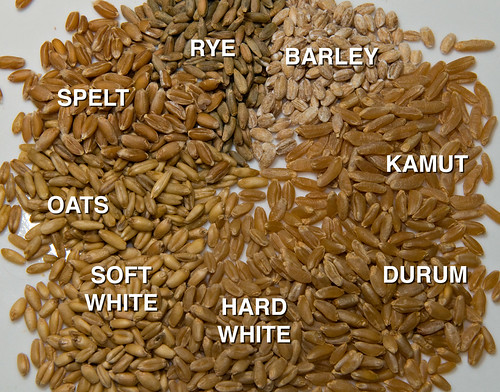Some notes on wheat with
relevance to breadmaking and pasta
Harold McGee's On Food and Cooking, the
best
food reference there is (at least in English), has a lot of
good
detail about this, including the latin names of the various
species and
varieties of wheat. Below are some common wheats and
related grains:
